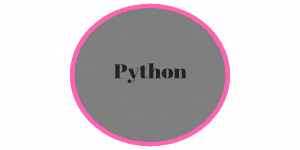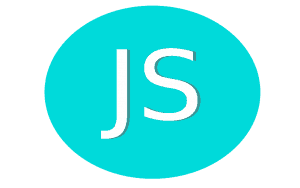Enter the hottest developer career of the future:
Blockchain programming.
Now’s your perfect time to get into it.
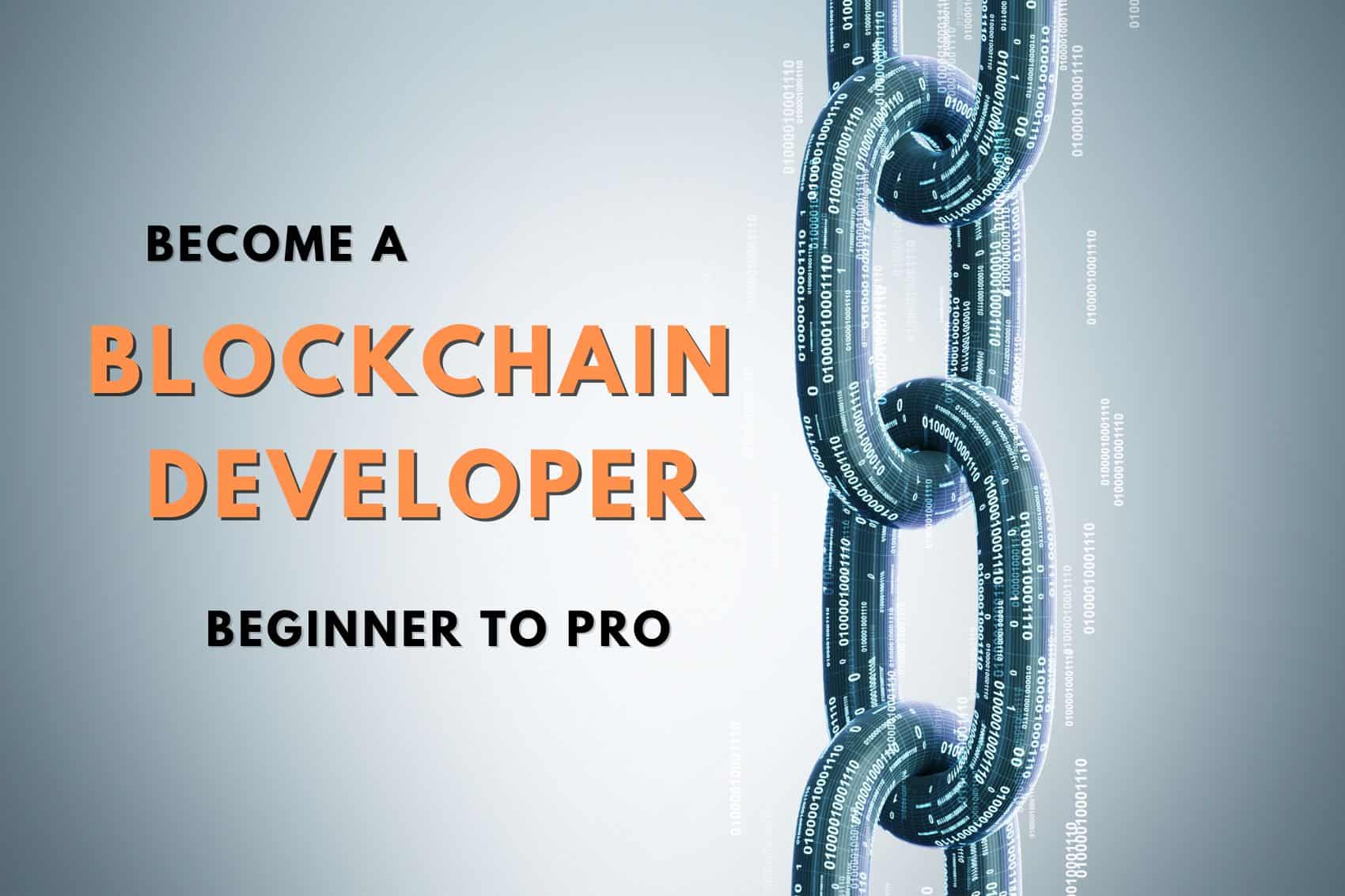
Here’s why:
- As a blockchain developer, you’re guaranteed to be in high demand for the next decades.
It used to be that blockchain developers were only needed by people who want to start their own cryptocurrency, which aren’t that many.
Now that everyone is seeing the benefits, blockchain adoption is going through the roof. Governments, Fortune 500 companies are starting to get into blockchain. It’s going mainstream – exploding the need for competent blockchain coders.
- You can get rich programming for blockchain
Simple Programmer is about getting you to success and making the most money as a developer.
The average salary is $109.000 per year, and the average freelance hourly is $81-$100
If you want to be a wealthy and successful programmer, we’d recommend you this career path as a great option.
- Your competition is still small.
Among 20 million software developers in the world, only 0,6% know blockchain coding.
And not all of those are at a level where they can deliver high-quality code on demand.
Learn Blockchain Programming: This 3-Step Tutorial Will Get You There
As a beginner, learning blockchain programming can seem overwhelming.
Where do you even start?
Fret no more.
This tutorial will guide you to the topics, so you can dive into them one by one.
Take it step by step! Learn everything from the ground up.
You’ll beat the overwhelm. You’ll start gaining a deeper understanding. And you’ll be well on your path to mastering blockchain programming – even if you’re still a beginner right now.
1. Blockchain programming basics
You’ll learn the blockchain programming basics, such as
- Get to know blockchain technology
- How blockchain is transforming the software development industry
- What exactly you’re doing as a blockchain developer
- What are its use cases
2. Coding for the blockchain
3. How to win at your career as a blockchain programmer
Alright, are you ready to become a blockchain developer wizard?
Let’s dive in then!
Getting to Know the Technology
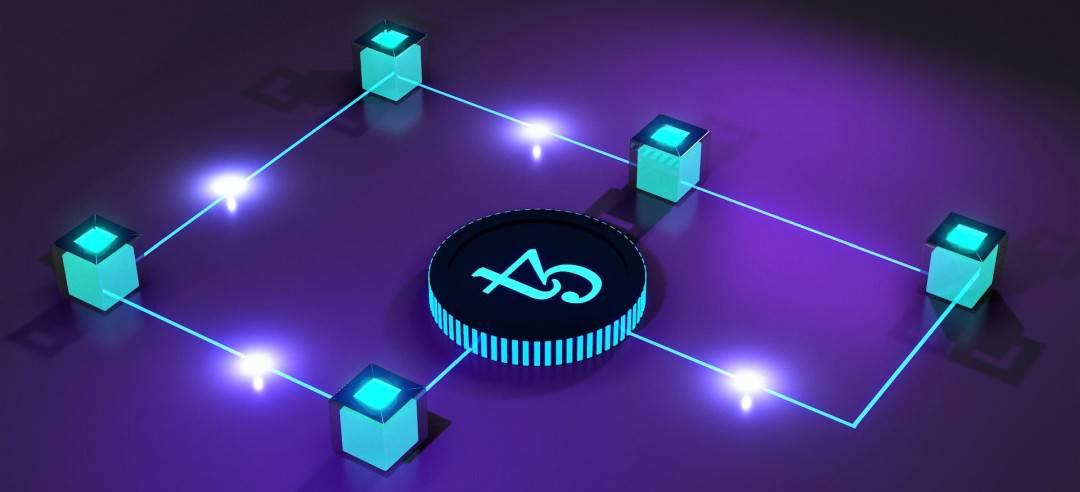
It follows the basic principles of a chain, where each block is tightly secured.
For example, when an application is developed using blockchain technology, the user has the authority to view and add a record to the software database.
They can’t modify or delete any data records, which improves the integrity of the entire process.
What Are Smart Contracts?
A smart contract is a software protocol that enforces a contract such as the performance of credible transactions without the need for third-parties. The smart contracts are stored on the blockchain, and they execute automatically as certain predetermined conditions are fulfilled.
How Blockchain is Transforming the Software Development Industry
The software development industry has witnessed a significant shift to cloud-based products. Cloud technology facilitates the decentralization of digital assets, which forms the backbone of Blockchain.
Blockchain technology is growing by leaps and bounds, addressing the various challenges faced in the software industry. Its purpose is to ensure productive testing activities, enhance collaboration within teams, and increase the use of smart contracts in software development.
Why Use Blockchain for Software Development?
As I stated, Blockchain software is highly secure. It’s used to store data in transparent ledgers and for data traverse in peer-to-peer networks.
The increase of mobile applications with enhanced security and higher quality has led to the rise of blockchain-oriented apps.
The key features of blockchain-oriented software (BOS) systems are as follows:
- Data Replication: The data is replicated and stored in thousands of systems, which ensures data security. Each node has a copy of the blockchain code.
- Requirement Checks: BOS checks the transaction requirements before processing for validation.
- Transaction Recording: BOS records transactions in a sequential log of interlinked blocks that are created by a consensus algorithm.
- Public-Key Cryptography: Transactions are based on public-key cryptography.
These features make blockchain software a huge benefit in ensuring the safety of data.
How it’s Used in the Software Industry
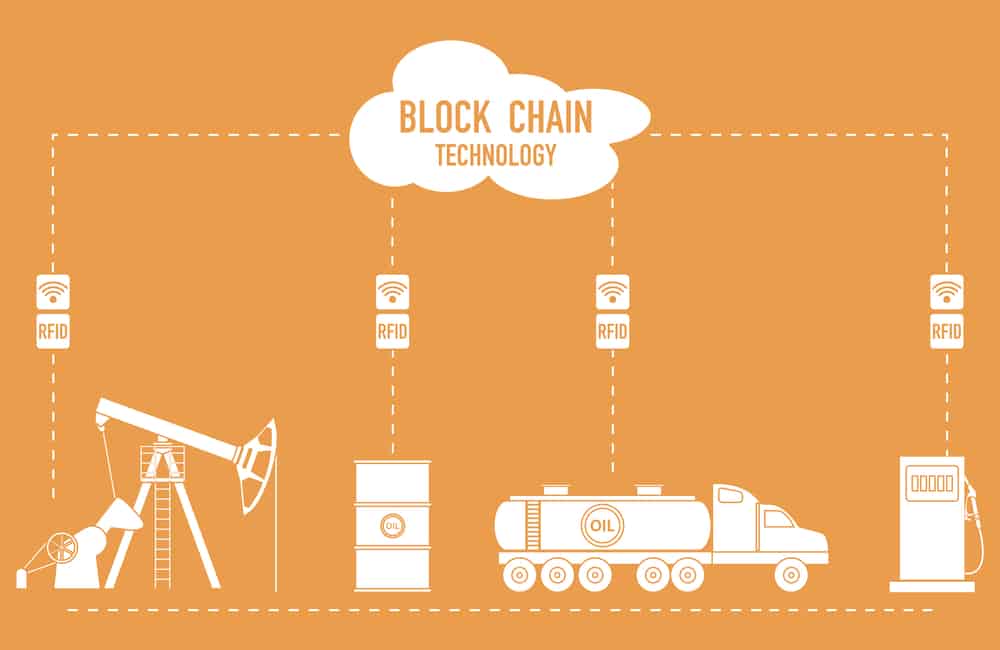
Many renowned companies are exploring opportunities to integrate blockchain technology into their databases for maximum security.
For example, General Electric is planning to implement blockchain-developed databases in their Aviation Division plans. They’re also working on software that could manage sales, tracking, record-keeping, inventory details with high-end security, transparency, and integrity.
In conventional development methods, transparency counters integrity, as transparency of data increases the chances of someone tampering with it. But with blockchain technology, they exist together and are offered as an added advantage to the companies.
What is Blockchain Programming?
Blockchain programming is writing smart contracts that run exactly as programmed without any chance for fraud, and building end-to-end applications for blockchain.
So, blockchain coding is either:
- Designing the blockchain peer-to-peer technology and its processes
- Developing the applications that use that technology
What is a Blockchain Developer, Exactly?
As a blockchain developer you’re either working on the blockchain itself – this would make you a core developer.
Or, you’re a blockchain software developer – you’re designing smart contracts and creating decentralized applications (dApps).
It’s harder to be a core than a software developer for blockchain.
The Best Programming Languages for Blockchain
Here is a look at a few blockchain programming languages, the purpose they serve, and some resources for further learning. Each section will be purely introductory, as the topic can get pretty extensive and full of code.
1. C++
Let’s start with the oldest of them all, C++. The language came to life in 1985 through the efforts of Bjarne Stroustrup. By then, the rudimentary C language existed, but it was process-oriented; C++ cropped up as an upgraded extension that is object-oriented (where data and functions are bundled up into a package called “Objects”). For the complete freshman, an object-oriented product can be reused on other platforms without the need for fresh coding.
C++ retained the efficiency, security, and flexibility of C. Its evergreen nature has made it the core language for blockchain coding, including the bitcoin blockchain. Warning to the newbies, though: As a type-only language with fairly outdated syntax, the learning curve is a bit steep. However, as most blockchain technologies are written in this language, any efforts you put in to learn this language will pay forth abundantly.
Here are a few more reasons why C++ is preferred for blockchain coding:
Better memory control. There are a lot of demands in the blockchain ecosystem. For instance, the platform needs to be a secure fortress but at the same time execute transactions and interact with all the nodes at a faster speed. For all these to happen, you need to have better control over memory and CPU usage. C++ can offer you that.
Superb multithreading. Threads are a bundle of instructions that are to be executed at the same time. During blockchain development, you will come across tasks that parallelize and those that do not. Most languages can only handle one of these tasks and not both. Guess what, C++ allows you to handle both simultaneously.
Compile time polymorphism. As was said before, C++ is an object-oriented programming (OOP) language. It also happens that polymorphism (using a certain feature in several ways) is a property of OOP. Now, by coding your blockchain through C++, you will be able to execute some tasks separately, thus enhancing the performance of the entire digital ledger.
Code isolation. This archaic but revolutionary coding language has namespace features that can be shipped from one place to another. But at times, collisions can occur and distort the entire system. However, thanks to the language’s segmentation ability that groups various APIs differently, code isolation/separation can become a little easier.
Maturity. As one of the oldest coding languages, C++ is mature and gets updated on a regular basis. Besides that, the language sports practical features like debuggers and special analytical tools that can detect or optimize various functions. This complexity and up-to-dateness of the language may be some of the reasons why Satoshi used it for bitcoin’s source code.
2. Python
Python is another simple coding language for a beginner programmer who is afraid of C++’s complex nature. It was developed in 1991 by a Dutch programmer by the name of Guido van Rossum. The language’s structure is based on a simple premise: simplicity, readability, and minimalism.
The simple nature of this language has seen it be supported by a massive crowd of both new and established developers. Rather than the curly brackets and keywords used in C++ to represent code blocks, Python uses simple and less-scary white spaces.
Simplicity can be easily translated to mean inefficiency. However, Python is good enough to build complex digital ledgers that are stable and reliable. And here is the best part: This language is scripted and can be compiled and uncompiled. For instance, when you find a bug in your code, you just fix it and reload your application.
For other languages like C++, you need to stop the app, fix the bug in your source code, and recompile it before restarting the application. It’s quite a lot of work that can be avoided by choosing Python. Additionally, the language offers developers a vast, free resource center that they can use to write their blockchain code.
3. JavaScript
JavaScript is one of the most-used languages on the World Wide Web. If you want an interactive site with beautiful UIs, this is the language to use. All the major browsers such as Google Chrome and Firefox support it.
We already said that a blockchain is, roughly put, a system of blocks placed one after the other. However, there is something special about this ledger—it’s immutable, meaning once data has been written, there is no undoing. JavaScript is one of the go-to languages when making a simple but tamperproof blockchain that is impossible for hackers and other deceitful individuals to alter. Just one setback, though: The language lacks the SHA256 hash function.
4. Solidity

Even though Solidity is still trying to establish its footing in the coding world, Ethereum (the second-biggest cryptocurrency after bitcoin) is already using it. Well, they made the language, so it makes sense that they be the first ones to use it. Nevertheless, Ethereum blockchain is one of the most efficient when it comes to speed and ease of creating smart contracts.
So if you are looking to create a decentralized app, hold an initial coin offering, or build a secure, immutable, and multipurpose blockchain, Solidity is the language to use. It's a must-know language for anyone who wishes to integrate smart contracts in their digital ledger. For tutorials on Solidity, you can check out ConsenSys Academy or the languages’ documentation from readthedocs.io.
5. GO
GO is the short form of GOLang, a relatively modern coding language that was developed in 2007 at Google and officially released for public use in 2012. This robust and multipurpose coding language was created in an effort to combine both the syntax and user-friendliness of other common languages like JavaScript while retaining the reliable security aspects of older languages like C and C++.
GO inherently runs in an operating system, and this means maximum flexibility, especially when dealing with several parts of a blockchain simultaneously. Ethereum’s SDK protocol is written in GO, and there are many other blockchain applications of this language.
9 Blockchain Use Cases You Can Work in as a Developer
Every year, there’s more use cases for blockchain.
Applications are being developed for different industries:
- Cybersecurity
- Healthcare
- Manufacturing
- Legal and Government
- Charity
- Retail
- Real Estate
- Tourism
- Media
and many others.
If you become a blockchain developer, you can have your pick of which use case in all these industries you’d like to work on.
How to Code Blockchain – Simplified in 5 Easy Steps
When you’re a beginner, you might not know how the process of coding for blockchain will look for you.
Let’s give you the easiest example for how to code blockchain.
Here’s how it works, in a nutshell:
- Code your smart contract or dApp inside your IDE
- Test it on a local blockchain
- Run or Connect to a node
- Test it on a Testnet
- Deploy it
What do you need for blockchain programming?
Software
- an IDE (Integrated Development Environment) to compile, test and run your blockchain software. Examples are Hardhat, Truffle and Remix, of which Remix is the easiest to use.
- Front-End environment such as Node.JS to program the user-facing part of dApps
- An API to explore blockchain data and transactions (example: blockchain.com’s developer API)
- the blockchain core for Bitcoin, or client for Ethereum, for example, compiled on your computer to run your own node
- OR a service like NOWNodes that connects you to a node. They also offer a block explorer.
Hardware
The hardware requirements are similar to what we outlined in what you need for programming.
Do consider the added strain of running your own node.
To start out, it’s okay to run a node on your own PC. In the long term, you might think about having another computer just to run the node. That way you’ll have better performance and security, and no added strain on your main PC.
The biggest bottleneck for your hardware is hard disk size. Ethereum for example requires a lot of back-and-forth communication and takes up a lot of hard disk size.
You’d need a fast hard disk like an SSD – and a bunch of empty space: While the whole Bitcoin blockchain size is only a few Gigabytes, Ethereum is about 1 Terabyte in size.
What do you need for blockchain programming?
- CPU: 2-4 Cores
- RAM: 8-16 GB RAM
- Hard disk: 500-1000+GB free space (preferably SSD)
- Bandwidth: 10 MBit/s – 25+ Mbit/s
The Top 7 Blockchain Developer Skills You’ll Need
There is no definitive answer to this question since blockchain technology is still in the early stages of its evolution. However, some of the skills that may be required to become a blockchain developer in 2022 include:
1. Grasp basic cryptography concepts
Cryptography can be scary for programmers.
But essential cryptography concepts will be underpinning what you do as a blockchain developer – so make sure you get familiar with the basics:
- Hashing functions
- Encryption
- Public & Private Keys
- Signing
If you’re going to be coding decentralized applications, you’ll be working with these concepts. It makes sense to first skill up in this area!
2. Understand how blockchain & distributed ledgers work
What is a blockchain? What is a distributed ledger?
If you’d like to be a good blockchain coder, you need to be able to answer these questions.
Because it’ll be your job to either design these things directly (as a core developer), or to build applications on top of them (as a blockchain software developer).
To get this understanding, you could start with a beginner-level book about blockchain.
3. Know Popular Blockchain Platforms
Familiarize yourself with the most popular blockchain platforms and how they work, such as:
- Ethereum
- Hyperledger
- Stellar
Once you know the specialties of each blockchain platform, you’re ready to take on projects running on them.
4. Have Coding Skills in languages used in web development, smart contracts & web3
Be specific with which coding skills you’re learning as an aspiring blockchain developer –
you’ll at some point in your career need to use the following languages.
But be smart about how you use your time and and energy. Always learn what you need for the current project you’re working on. Don’t spend six months upfront, studying books and learning languages in isolation, before starting on your first hands-on blockchain coding project.
If you use the ‘learning while doing’ approach, you’ll shorten your learning curve.
Solidity
With Solidity you can program smart contracts in most blockchain platforms. It’s a great skill for you to have as a blockchain developer. It’s also the easiest one to pick up!
HTML & CSS
If you want to be a front-end developer for decentralized apps, you need good skills in the web development languages of HTML & CSS.
JavaScript / node.JS
Learn Web3.js, which is a JavaScript library that lets web applications interact with the blockchain node.
GO & Python
These are generally used for Web3 apps, so they’re a great skill to add to your toolbox.
C++
C++ was used by the founders of Bitcoin to create its original blockchain. If you’re going to be working on the Bitcoin blockchain, it’d be a good idea to learn C++.
5. Be Good at Object-Oriented Programming Concepts
Being good at Object-Oriented Programming (OOP) means you have to understand Inheritance, Polymorphism & Classes and how to use them in your code.
Blockchain coding languages like Solidity are based on Object-Oriented Programming. These ‘traditional development concepts will show up whenever you have to integrate applications with existing blockchain technology.
You don’t need to learn full-stack development to start as a blockchain developer. But in many cases you’ll need some aspect of traditional full-stack coding in your blockchain projects.
So keep learning it as you go along.
6. Know Databases, Data Structures & Networking Concepts
As a blockchain developer you’ll need to know databases, data structures, and networking:
- Flat & relational databases
- Stacks, Linked Lists, Queues
- LAN/WAN, Switches & Routers
All these are going to come into play when you’re dealing with blockchain.
A blockchain is a form of database, your applications will rely on stacks, linked lists and queues to recall information, and you’ll need good knowledge of networking to understand how communication on the blockchain works.
7. Be Hungry
Work to improve your developer skills all the time. Be willing to learn and keep up with new blockchain technologies.
Go and join the Reddit forums, Github pages, and StackExchange.
To become a top-tier blockchain coder, always stay hungry for more knowledge and skills.
Blockchain Developer Roadmap – The 13 Milestones to Become one from Scratch
Becoming a blockchain developer is not just about getting certified. It’s about becoming a pro at the skills blockchain coding requires.
Taking courses helps your learning journey. Becoming certified does give a boost to your credibility.
But what companies look for most (the smart ones, at least) is your ability to execute the relevant blockchain programming tasks – so they can get results in their business.
Learn by doing, be able to prove your proficiency with projects you’ve done on your own, and you’ll get that high-paying job or freelance contract sooner than you think!
Here’s your roadmap to get there, ASAP:
1. Learn programming basics
If you’re not yet a developer, start with learning the basics of your first language. For different blockchain projects, you might need to learn different languages.
Always start with one, though. And you have to start somewhere, right?
So, what language should you learn first?
For example, you could start by learning to code with the node.JS platform (based on JavaScript).
JavaScript and Node.js are enough to build programs that interact with cryptocurrency APIs in real time. JavaScript is the most popular language for blockchain programming, while Solidity is the easiest to learn.
You’d be well-advised to learn both.
2. Learn how the blockchain process works
Here are the basic concepts you should learn to understand the blockchain process:
The foundational parts of a blockchain
Make sure you grasp the following:
- What is a peer-to-peer network?
- What is cryptographic hashing?
- What is asymmetric key cryptography?
Ledgers
Get the concept of a ledger, and how transactions are recorded in a ledger.
The technical blockchain terms
Be familiar with terms like:
- Authentication
- Authorization
- Mining
- Nonce
- Proof-of-work
- Validating Transactions
- Consensus
- Creating & Adding blocks
The white paper
Read the white paper and work through its different sections one by one.
Books about blockchain and how to program for it
Read: Blockchain by Josh Thompsons, Ethereum by Henning Diedrich, Introducing Ethereum and Solidity by Chris Dannen, and Blockchain by Melanie Swan.
Crypto wallets and dApps
Start playing around with crypto wallets and dApps.
3. Start blockchain coding tutorials
The best choice are tutorials that are divided into little projects you have to complete yourself. This way you’re not just taking in a bunch of new information – but you’re always learning by doing.
That’s how you make the knowledge stick!
- Learn Solidity. It’s a beginner-friendly language and it’s used in many applications. You could start with free tutorials and gamified courses like Space Doggos & CryptoZombies.
- Take advanced courses. Once you know your way around the basics, consider investing in a higher-level course that can take you all the way to becoming a professional blockchain developer.
Make sure to pick a course that has you do professional level projects in a guided way. Once you’ve been through one of those, you’re ready for a real-world job, freelancing career, or your own blockchain projects.
4. Get practical: Set up your own node
While it’s not 100% necessary to run your own node – it’s recommended if you want to be a serious blockchain developer.
It lets you monitor your coding efforts and gives you full control.
5. Understand consensus algorithms
Consensus Mechanism: The instrument by which a decentralized system goes to an agreement on specific issues.
E.g., the original consensus mechanism presented in the white paper, Proof of Work.
6. Learn to fork an existing blockchain, like bitcoin or ETH
For this, you’ll have to download and compile the core code on your computer. Then you’ll reprogram the code to include the changes you want in your personal blockchain fork.
7. Fork a wallet
Learn how to create your own cryptocurrency wallet from scratch.
8. Change the consensus algorithm in your fork
To better understand the different consensus algorithms in blockchain, try and change which one your own blockchain fork is using.
9. Set up a testnet for that fork and put it online
A testnet is a blockchain which doesn’t require you to spend real currency to use its network.
This makes them ideal for trying out your code ideas or pre-launching a new tool you created. Getting started on a testnet can be a good sandbox exercise in your roadmap to become a blockchain developer.
10. Write a smart contract and put it online at Ethereum or similar platforms
Get your feet wet creating your first smart contract and putting it online.
11. Code a dApp and put it online at a platform
Now you’re ready to develop your very own dApp, and release it to the world after you’re finished.
12. All the while, keep improving
If you work hard at it, you can achieve all this in about three months.
But while you’re learning and getting your hands dirty coding your first projects on the blockchain, don’t forget to mix with like-minded others:
The best places for this are GitHub, Reddit and StackExchange.
Chat with other developers, ask questions and seek their help. You’ll learn everything even quicker, you’ll start getting your name out there, and you’ll make some cool connections.
How You’ll Make Mountains of Money as a Blockchain Developer
The salary for a blockchain coder is quite high – usually over six figures per year.
As a freelancer, you can command hourly rates upwards of 100$ per hour.
And if your own blockchain project takes off, it could be a way for you to get rich in a short amount of time.
What is the salary of a blockchain developer?
In North America, blockchain coders can make between $150-$200 per hour, or low-to-mid six figures per year. In Western Europe, developers can also make at least $100-$150. In the Far East, predominantly in India, you can find a blockchain developer for as little as $40 per hour.
FAQ about Blockchain Programming for Beginners
Does a blockchain developer need coding?
So far there aren’t complete no-code solutions for working on blockchain technology, developing smart contracts or creating dApps. This means that you’d need some amount of coding knowledge for any blockchain development project. For many applications, you can get away with specialized skills in only one or two programming languages.
Is blockchain programming difficult?
Blockchain programming can be more difficult, because you can’t move as fast as in traditional development – you can’t afford to break things in a decentralized database. Also, you need to be well-rounded in cryptography, back-end and front-end development and networking concepts.
How long does it take to learn blockchain?
You can learn blockchain programming to a decent level within 1-3 months if you follow the roadmap we outlined. To become an elite-level blockchain developer will take 1-3 years. Put in the time needed, and you’ll be able to go far in this lucrative career.
Can you teach yourself blockchain?
In theory you can learn blockchain by yourself. Teach yourself with free tutorials and a lot of coding practice. While many employers require a university degree, not all do. You also don’t need to pay for a course. But it’ll be easier if you don’t do it all by yourself, but with expert instruction.


